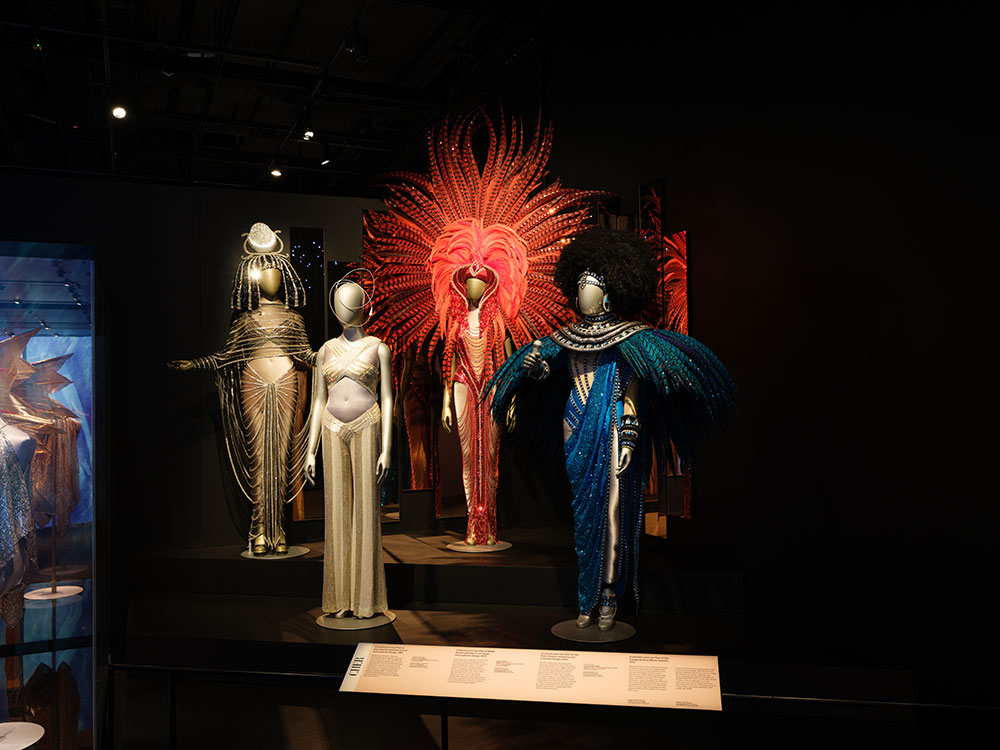
Curator Kate Bailey was fresh from Glastonbury when we met at the cafe inside the Auckland Museum, just hours before the official opening of Diva. On tour from London’s famed V&A, the exhibition explores the evolution of the diva, from operatic idols to camp superstars and today’s ‘divapreneurs’, through music, performance and fabulous fashion. Think Cher’s sequins, Tina Turner’s 1977 flame dress, Lady Gaga’s Oscars Valentino gown, Prince’s surprisingly petite heeled boots, Amy Winehouse’s yellow Preen party dress: larger-than-life figures who command respect, and attention, through their clearly defined look and unmistakable talent.
While taking in the exhibition – which features a soundtrack playing through headphones as a guide – there were several moments where I audibly gasped: seeing a delicate silk flapper dress worn by the It girl Clara Bow, a 1940s costume worn by Joan Crawford in Mildred Pierce. Marilyn Monroe’s fringed black dress from Some Like It Hot surprised me by how small she really was (the media’s representation of bodies throughout history is truly warped). There is a room featuring five Rihanna ensembles including her Adam Selman ‘naked dress’ and durag, covered in 200,000 Swarovski crystals (it positively dazzles from every angle; I squealed) and two Met Gala looks including the 2018 Maison Margiela “pope” ensemble. There is also the Anti crown, easy to miss in a corner but special to see up close.
The local connection comes in the form of Dame Kiri te Kanawa’s feather-adorned coat worn for her performance for the turn of the millennium, which is also a nice reference back to the exhibition's operatic roots. Bailey, a senior curator of theatre and performance at the V&A, had worked on an earlier opera-themed exhibition and became fascinated by the term ‘diva’.
“In opera it had one particular meaning. So I became very curious about this term and the use of it because it's really kind of omnipresent in our vocabulary, and is used in positive and negative ways,” she says.
“I was very curious to think about how and why this term that came from Latin for goddess, was translated onto the stage. What made this a negative term – and how can we reclaim it? The exhibition is an answer to an exploration about the concept of what a diva is.” Kate found that an unapologetic and clear artistic vision was the thread across generations.
At the famed Glastonbury festival, Kate arrived as Lorde was performing as the ‘secret act’ – and was intrigued by her version of a modern day musical diva. “I think she's so interesting, in performance style, and her innovation,” she says, also noting David Bowie’s 2016 endorsement of the New Zealand star as ‘the future of music’. “Coming back with that kind of confidence and owning it… Everything is very considered and very physical – everyone will remember exactly how she looks.”
From festival sets to Met Gala steps, we talked about what defines a diva, why the term deserves a comeback and some of the most fabulous pieces and famous names in the exhibition.
• Diva runs at the Auckland Museum until October 25. Buy tickets and book a session here.
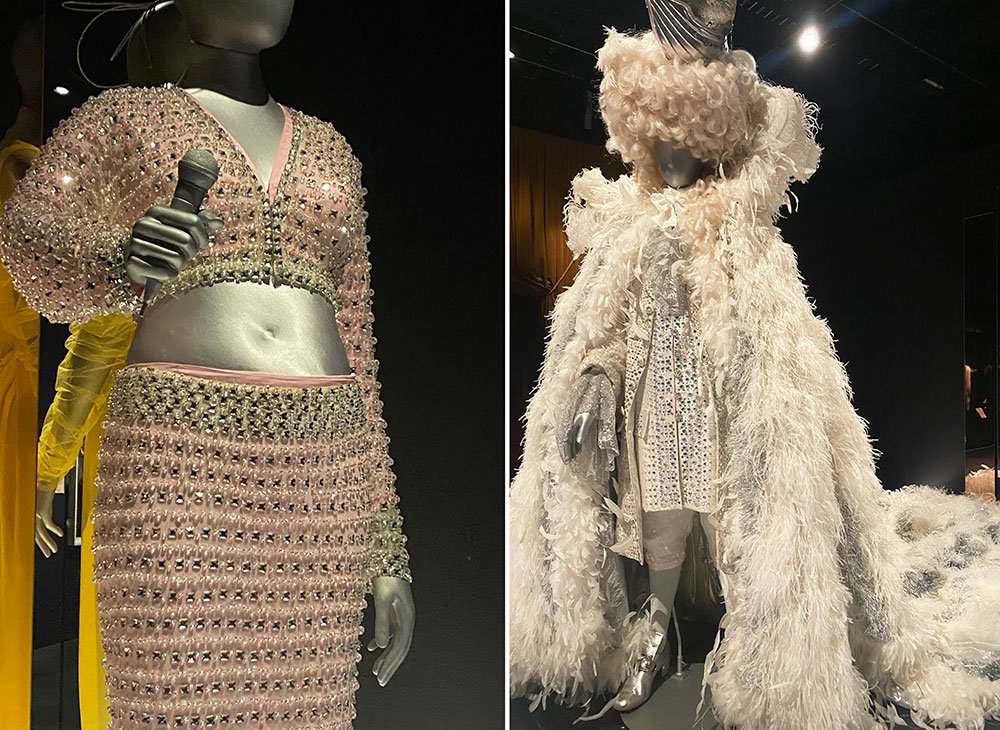
How did you balance that positive and the loaded, negative side of the term diva?
When you enter the exhibition there's a timeline that looks at waves of feminism. That underpinned a chronology of changing attitudes to women’s rights and independence. Perhaps when things become negative… every time there's a push forward, there's a push back. I think that sets the scene for the thesis of the show.
The exhibition itself is structured into two acts, like an opera. The first looks at a chronology from 1830 when the term became widely used in opera to 1960, just before we go into the second wave of feminism.
That first section explores emancipation, suffrage and women finding their voice – and how the relationship with the diva in silent film and Hollywood contributes to a more negative impression. Whether it's Bette Davis fighting to be treated the same as a man or women in performance and the resistance of studios.
The last diva that you meet in the first act is Maria Callas – a pivotal figure who is often misunderstood for being a diva in a negative context when actually, was she simply trying to create the best work of art? How she was seen, how she was treated and that relationship with the public and the private, in a way personifies that first act.
We see a reclaiming in the second act of the exhibition. Reclaiming the diva is more an exploration of the multifaceted diva and celebrating divas in all their forms, from divapreneurs taking control of their career trajectories by being philanthropists, activists, creatives, designers or fashion leaders.
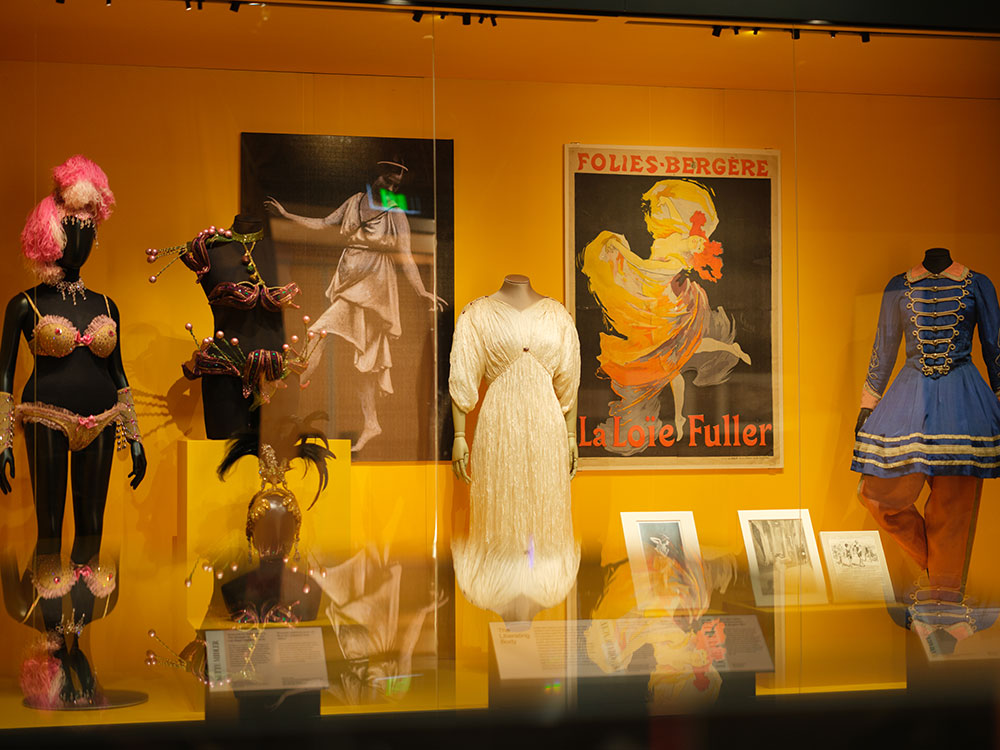
Were there any consistencies from those early divas to the more modern ones?
What I've tried to do in the show is bring together the individual diva’s story and how they've perhaps shifted the needle – pushing forward and redefining the term. But ultimately, the same attributes apply to the divas across the centuries. When you look at their ambition, courage, fearlessness, hard work, sense of self, identity and leadership – in business and life – you see parallels.
For every generation there is always a struggle, whether that was emancipation in the 19th century or relationship with the media in Hollywood or issues around social media today. I think there are threads that run through: hard work, struggle, resilience, courage. And the voice; using your voice to make a difference.
Obviously fashion is a big part of the exhibition. But if you take away the person and you’re just looking at the garment, what makes a diva ensemble? Are there elements that stand out in terms of silhouettes or construction?
Representing the divas when they're not in the room is a real skill, and a craft that we worked on with our conservation team with the [presentation of the] costumes. I think one of the takeaways is that because the diva is a solo artist, you're on your own – so the importance, on stage particularly, of creating an immediately recognisable look and sense of who they are comes through.
Crafting a Rihanna or a Maria Callas or Lady Gaga is a really important part of how you see the fashion, so we have silver and gold mannequins, some of them with these sort of halos, that represent these otherworldly, extraordinarily talented performers.
There's a lot of glistening and sparkling!
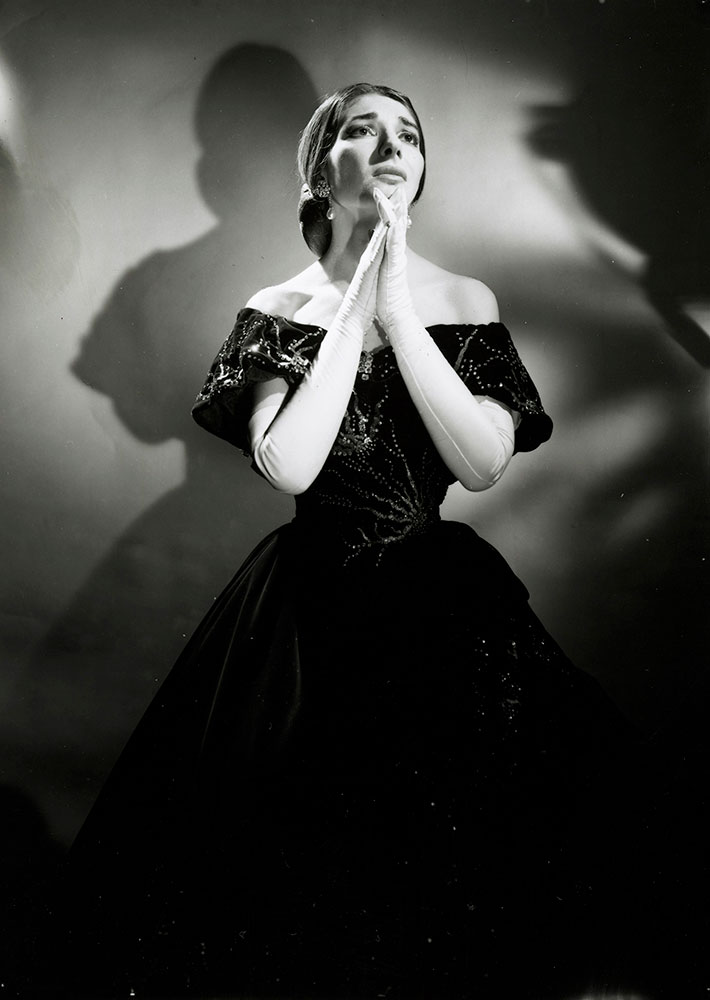
When I think diva, I think of Beyonce [there are references to her in the exhibition but no garments] - and when I think diva fashion, I think of the one and only Bob Mackie. Can you talk a little about him and his place in the exhibition, and his influence.
He's a fascinating designer because he came from the Hollywood film world, jumped into creating looks for showgirls then worked with Cher and Tina Turner. He is a designer who allowed them to express themselves and gave them confidence to create their identities. He really is fully aware that the diva is the centre of the stage.
We have Tina Turner’s 1977 flame dress in the exhibition, and you can also see a version of that dress being worn by RuPaul – the drag diva – and it was taken on by Cher and Beyonce. Bob Mackie has created a lot of diva tropes and images.
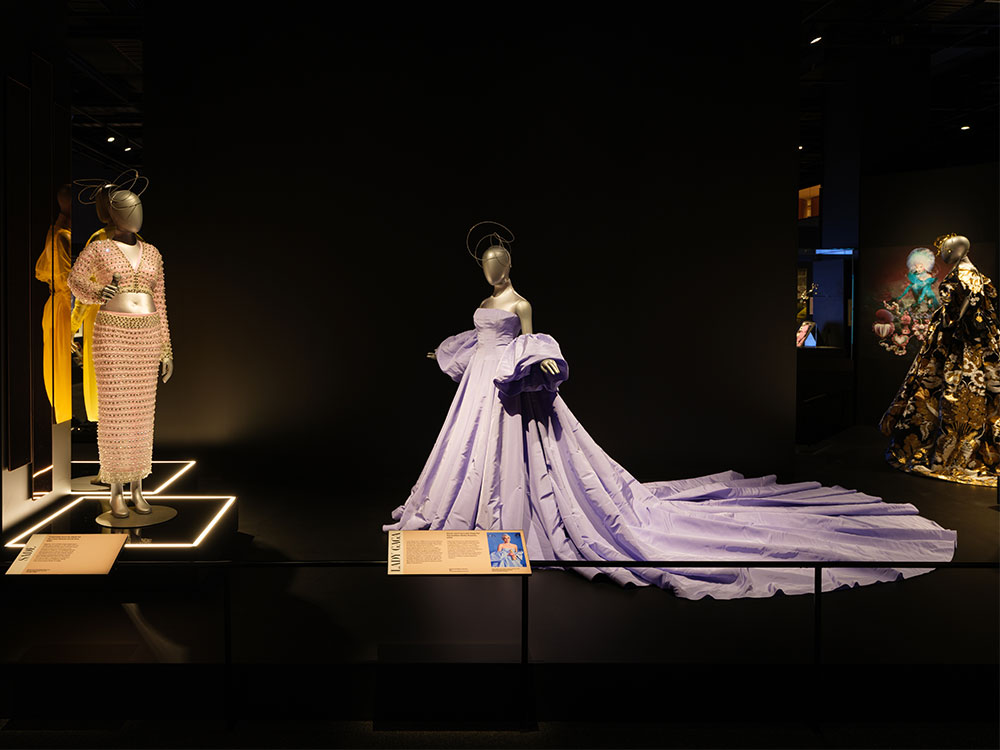
How have audiences interacted with the exhibition? I'm interested in that from a New Zealand point of view because we're not really known for spectacle and glamour!
Throughout the exhibition you follow the music, and I think the music is universal. It's different generations of visitors and the music sets the scene.
When the exhibition was at the V&A, it was great to see an intergenerational audience – you can find your diva, whether you're a grandmother or granddaughter.
It’s about style and identity, but it's really about the story, and I think everybody can relate to that narrative and connect through the music.
This interview has been edited and condensed for clarity
.jpg)
.jpg)


